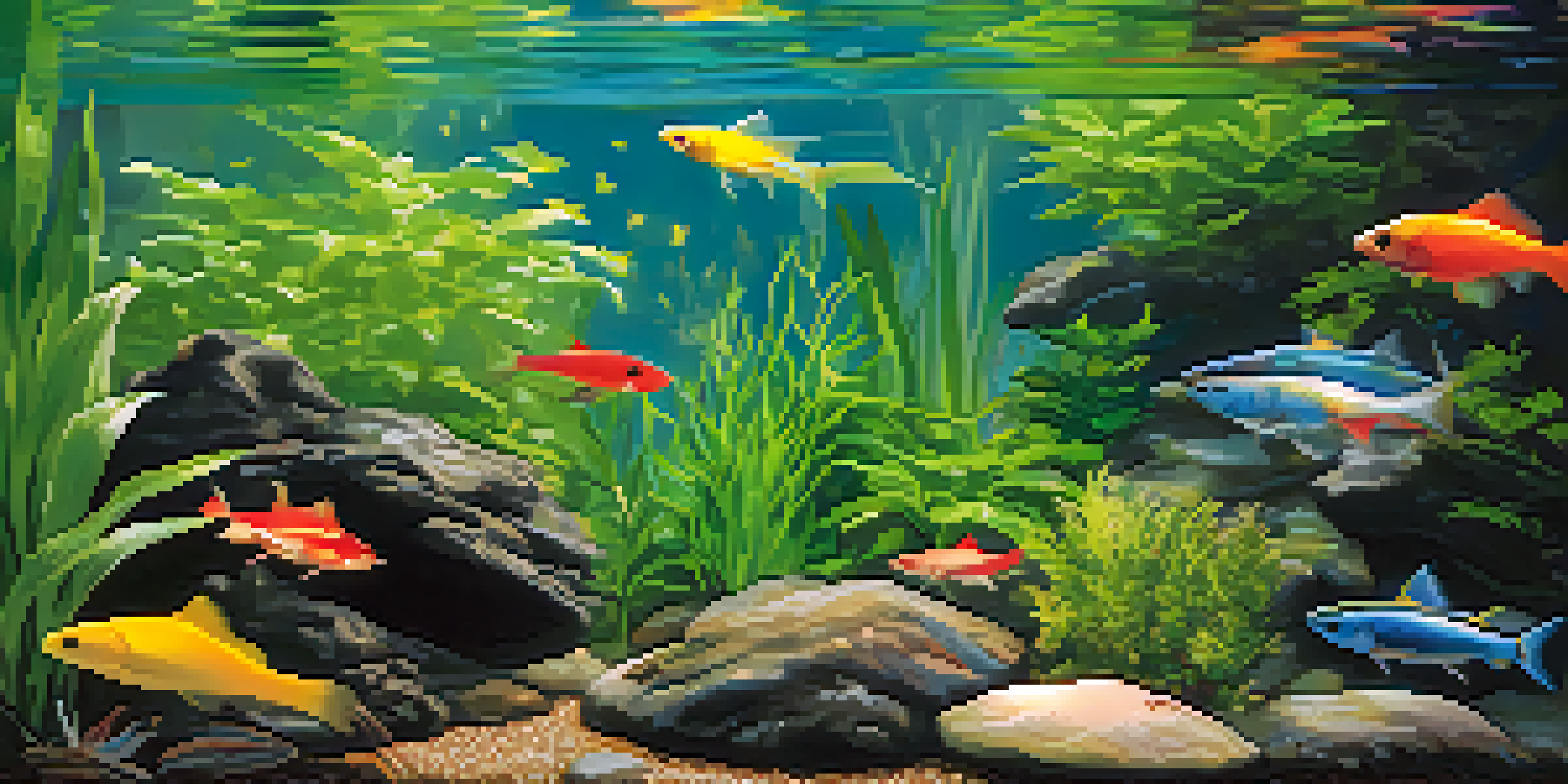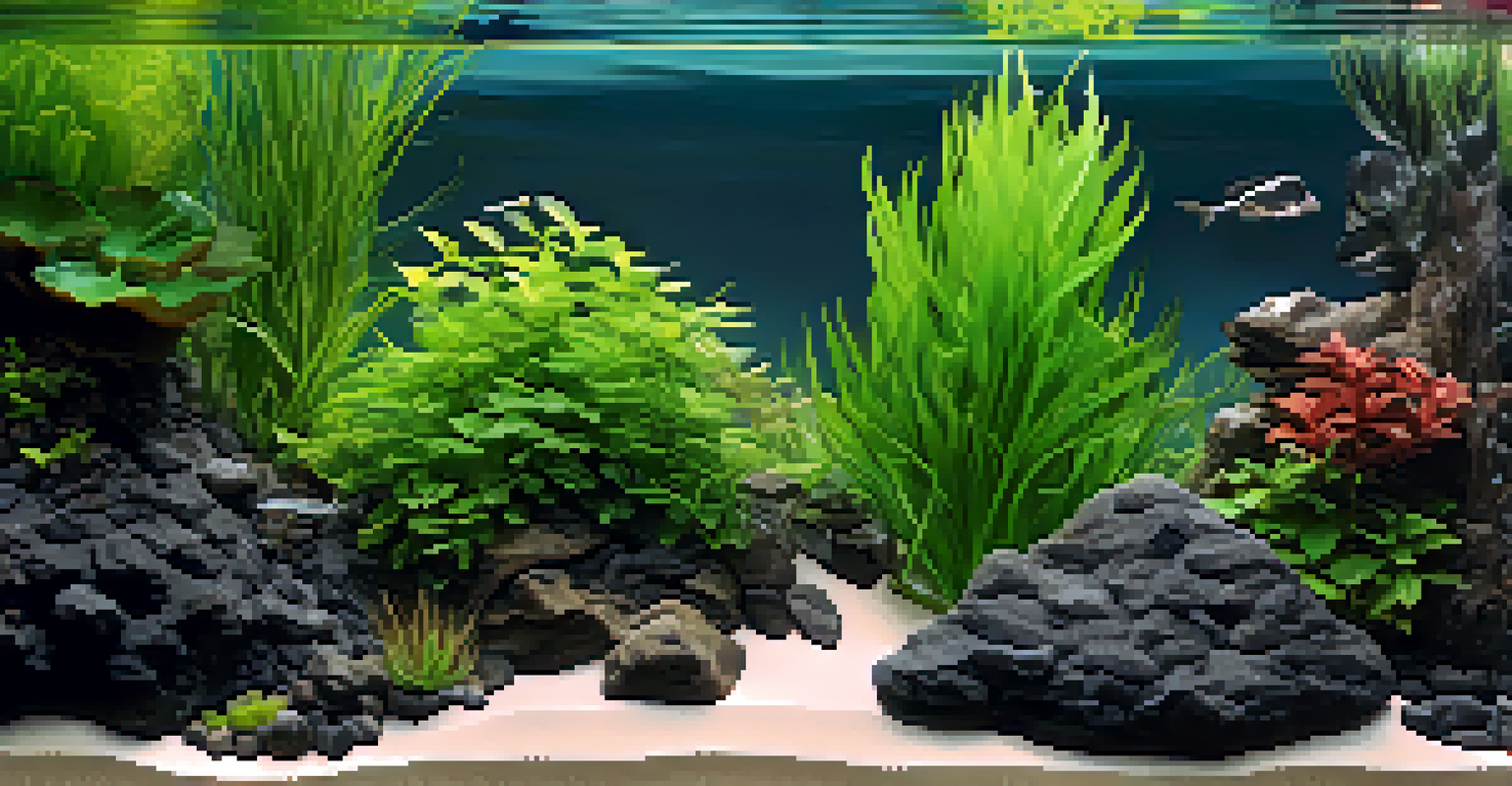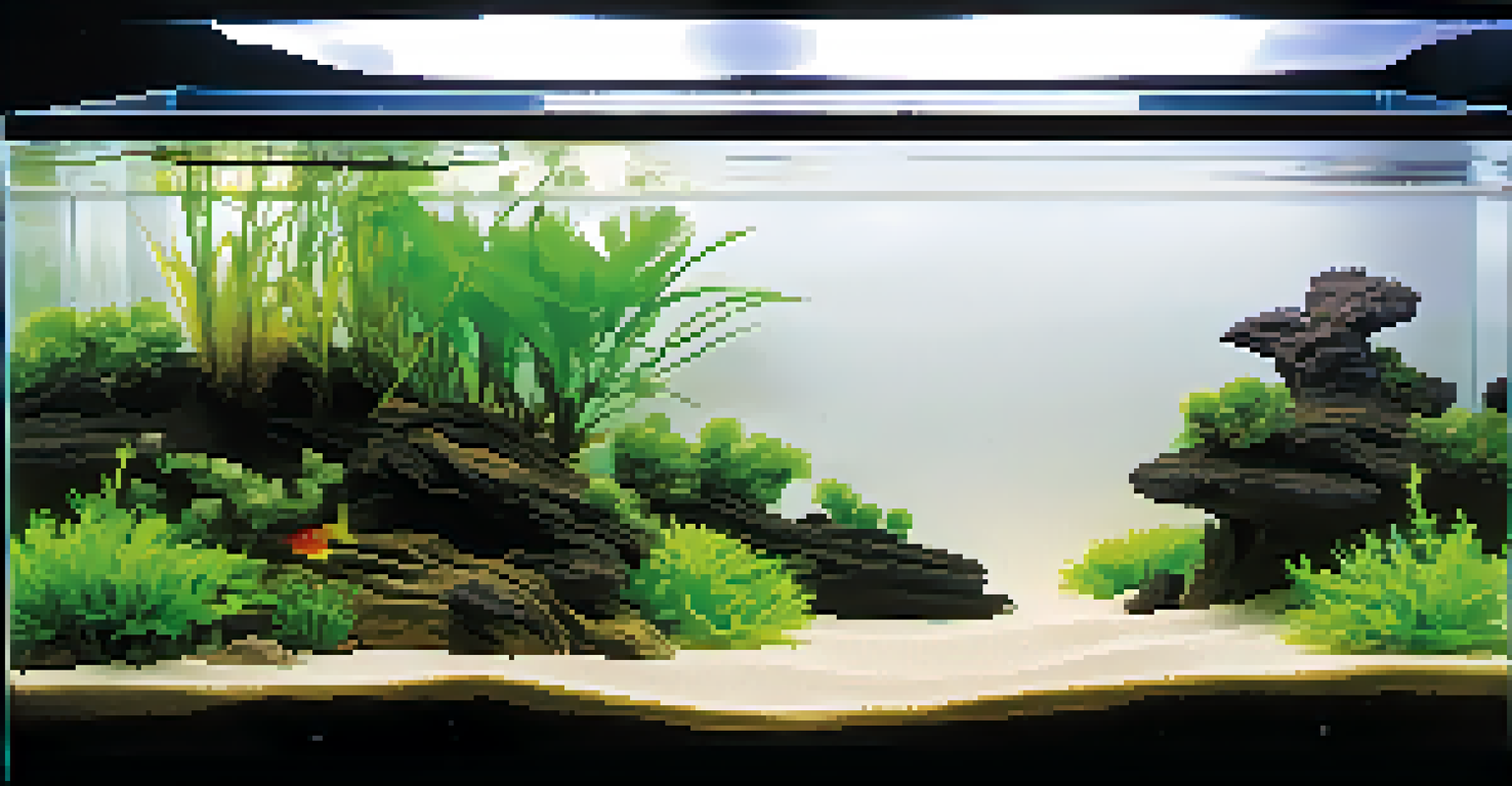The Role of Substrates in Aquascaping: A Complete Guide

What Are Aquascaping Substrates and Their Importance?
Aquascaping substrates are the foundation upon which your underwater garden is built. They not only provide a base for plants to root but also play a crucial role in the overall health of the aquarium. Choosing the right substrate can enhance the visual appeal and promote biological processes essential for a thriving aquatic ecosystem.
The aquarium is a world in itself, a self-sustaining ecosystem where every element plays a vital role.
Think of substrates as the soil in a traditional garden; just like plants need nutritious soil to grow, aquatic plants rely on substrates to obtain the necessary nutrients. The right substrate can also help with water filtration and oxygenation, benefiting both plants and fish. Without a suitable substrate, your aquascape may struggle to flourish.
In essence, substrates are more than just decorative elements; they are vital components that influence the growth and wellbeing of your aquatic plants and overall ecosystem. Understanding their role is the first step in creating a successful aquascape.
Types of Substrates: Which One is Right for You?
There are various types of substrates available, each with unique properties. Common options include gravel, sand, and specialized plant substrates, each serving different purposes. For example, while gravel allows for easy water flow, plant-specific substrates often contain nutrients that foster healthier growth for aquatic plants.

When selecting a substrate, consider factors like the type of plants you want to grow and the overall aesthetic you’re aiming for. If you’re planning to cultivate heavy-rooted plants like Amazon swords, a nutrient-rich substrate might be the best choice. On the other hand, if you prefer a minimalist look with delicate plants, fine sand could be more suitable.
Substrates are essential for health
Aquascaping substrates provide vital nutrients and support for aquatic plants, impacting the overall health of the ecosystem.
Ultimately, the right substrate aligns with your aquascaping goals and the needs of your aquatic life. Take your time to research and decide what will work best for your unique setup.
How to Prepare Substrates for Aquascaping
Preparing your substrate is an essential step before setting up your aquascape. This process often involves rinsing the substrate thoroughly to eliminate dust and debris, which can cloud the water in your aquarium. Failing to do this can lead to murky water and a less than ideal environment for your aquatic life.
A healthy aquarium is a balance of biological, chemical, and physical factors, all influenced by the substrate you choose.
Additionally, layering your substrate can enhance its effectiveness. For instance, placing a nutrient-rich layer beneath a decorative top layer can promote plant health while maintaining an appealing appearance. This layering technique helps to create a balanced environment that supports both aesthetics and biology.
Taking the time to properly prepare your substrate will pay off in the long run, as it sets the stage for a vibrant and healthy aquascape. It’s a small investment of effort that leads to a flourishing underwater landscape.
Maintaining Your Substrate: Tips for Longevity
Maintaining your substrate is crucial for the health of your aquascape. Regular cleaning helps prevent the buildup of waste and detritus, which can lead to poor water quality and hinder plant growth. A gentle vacuuming during water changes can effectively keep your substrate clean without disturbing its structure.
It's also important to monitor nutrient levels, as substrates can deplete over time. You may need to supplement your plants with fertilizers, especially if you notice growth slowing. By keeping an eye on nutrient levels and responding accordingly, you can ensure your plants thrive and maintain a healthy ecosystem.
Choose the right substrate type
Different substrates serve specific purposes, so selecting the right one based on your plants and aesthetic goals is crucial.
Ultimately, regular maintenance not only enhances the appearance of your aquascape but also ensures that it remains a healthy environment for all its inhabitants. A little effort in upkeep goes a long way in sustaining a vibrant aquatic landscape.
The Role of Substrates in Plant Growth
Substrates play a critical role in the growth of aquatic plants by providing essential nutrients and anchoring roots. Nutrient-rich substrates are especially important for plants that rely on their roots for sustenance. Without a proper substrate, plants may struggle to absorb the nutrients they need to thrive.
Moreover, the type of substrate can impact the overall growth rate and health of your plants. For instance, heavier substrates can support larger root systems, while lighter substrates may encourage faster growth but require more frequent fertilization. Understanding how different substrates affect plant growth is key to creating a flourishing aquascape.
In the end, the right substrate can transform your aquascape into a lush underwater garden, providing both visual delight and a healthy environment for aquatic life. Choosing wisely sets the stage for a thriving ecosystem.
Substrates and Aquascaping Aesthetics
The aesthetic appeal of your aquascape is significantly influenced by the substrate you choose. Different substrates come in various colors, textures, and sizes, allowing you to create unique looks that reflect your style. A dark substrate can highlight the vibrant colors of your plants and fish, while a lighter substrate can create a bright and airy feel.
Think about how the substrate complements the overall design of your aquarium. For example, using a mix of fine sand with larger gravel can create a natural riverbed look, enhancing the realism of your aquascape. The right substrate can also help define different areas within the aquarium, adding depth and interest.
Maintain your substrate for longevity
Regular cleaning and monitoring nutrient levels help maintain a healthy substrate, ensuring a vibrant aquatic environment.
Ultimately, the aesthetic choices you make regarding substrates can elevate your aquascape from ordinary to extraordinary. Take time to experiment with different substrates to find the perfect match for your vision.
Common Mistakes to Avoid with Aquascaping Substrates
One common mistake many aquascapers make is choosing the wrong substrate for their plants. Not all plants thrive in every type of substrate, so it’s essential to match the substrate to the specific needs of your plants. For instance, delicate root systems may struggle in coarse gravel, while heavy-rooted plants may need a more supportive base.
Another mistake is neglecting the importance of substrate depth. A substrate that’s too thin may not provide enough support for plants, while a substrate that’s too deep can lead to anaerobic pockets, which can be harmful to plant roots. Finding the right balance is crucial for plant health.

By being aware of these common pitfalls, you can set yourself up for success in your aquascaping journey. Avoiding these mistakes will help you create a thriving underwater environment that showcases your aquatic plants beautifully.